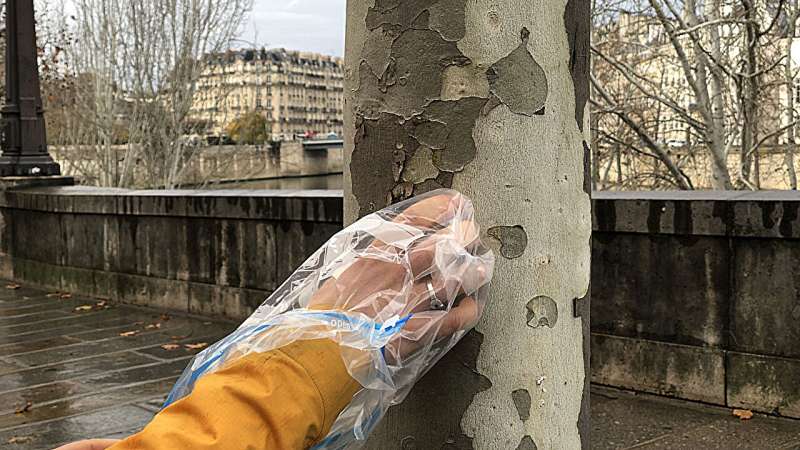Volunteers track Parisian pollution with the help of tree bark

Along the streets of Paris, more than 40,000 tall, leafy plane trees provide picturesque backdrops, offer shade to city dwellers, and improve air quality, among numerous other benefits. Since 2016, some of these trees have also served as low-cost, passive biological sensors for Ecorc'Air, a crowdsourced science initiative that monitors levels of fine-particle pollutants associated with road traffic.
Motor vehicles emit numerous forms of particulate matter linked to health problems such as cardiovascular and respiratory conditions. Some of these pollutants settle out of the air onto the bark of plane trees and become trapped on the porous surface. Because the trees shed their bark annually, a bark fragment collected just before shedding occurs holds a record of all pollution deposited in the past year.
C. Carvallo and colleagues report how Ecorc'Air is harnessing the pollutant-collecting properties of plane tree bark to track annual levels of traffic pollution at a finer scale than is currently feasible with electronic air quality monitoring tools. The research is in the journal Community Science.
The initiative invites Parisian volunteers to collect small bark fragments from plane trees in their neighborhoods and send them in freezer bags to participating laboratories鈥攁long with information such as the trees' GPS coordinates and their proximity to the nearest road.
In the lab, researchers measure the magnetic properties of each bark sample, a proxy for levels of metallic particulate matter accumulated on the sampled tree. They then use these measurements to create detailed annual maps of estimated traffic pollutant concentrations in Paris.
The project is ongoing, but several findings from its first eight years have stood out. For instance, the researchers have identified several areas in the city with consistently high concentrations of metallic particulate traffic pollutants. They also identified trends in pollutant concentrations over time along the Pompidou Expressway, a major thoroughfare in Paris, demonstrating how Ecorc'Air can capture local-scale changes.
Interviews with Ecorc'Air participants suggest that interest in environmental research is growing among Parisians, especially those who are involved in local associations. Overall, the project's findings show how crowdsourced efforts such as Ecorc'Air can aid environmental research and potentially help inform policy and detailed urban planning.
More information: C. Carvallo et al, Ecorc'Air: A Citizen Science Project for the Biomonitoring of Vehicular Air Pollution in Paris, France, Community Science (2024).
Provided by American Geophysical Union
This story is republished courtesy of Eos, hosted by the American Geophysical Union. Read the original story .


















